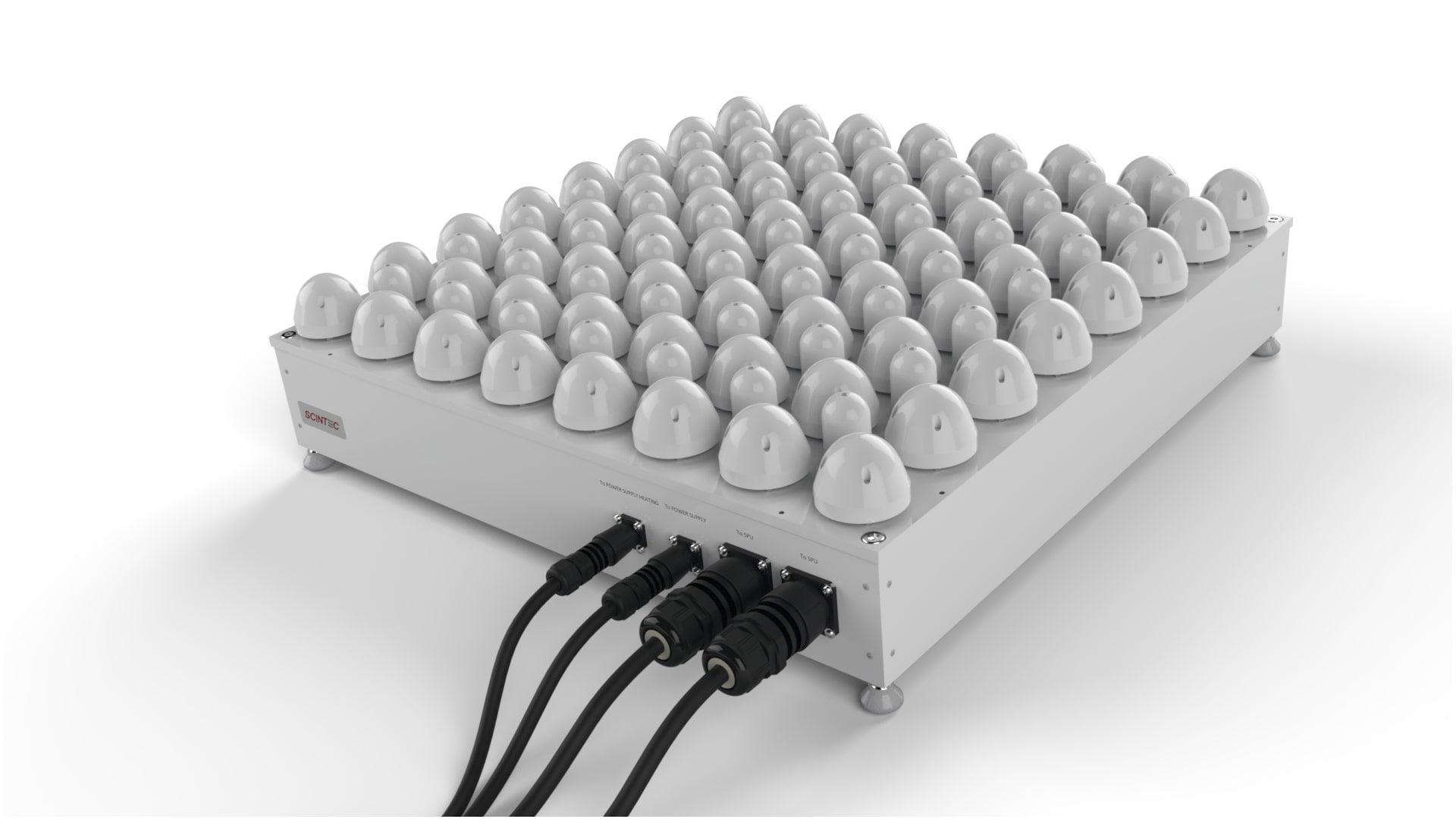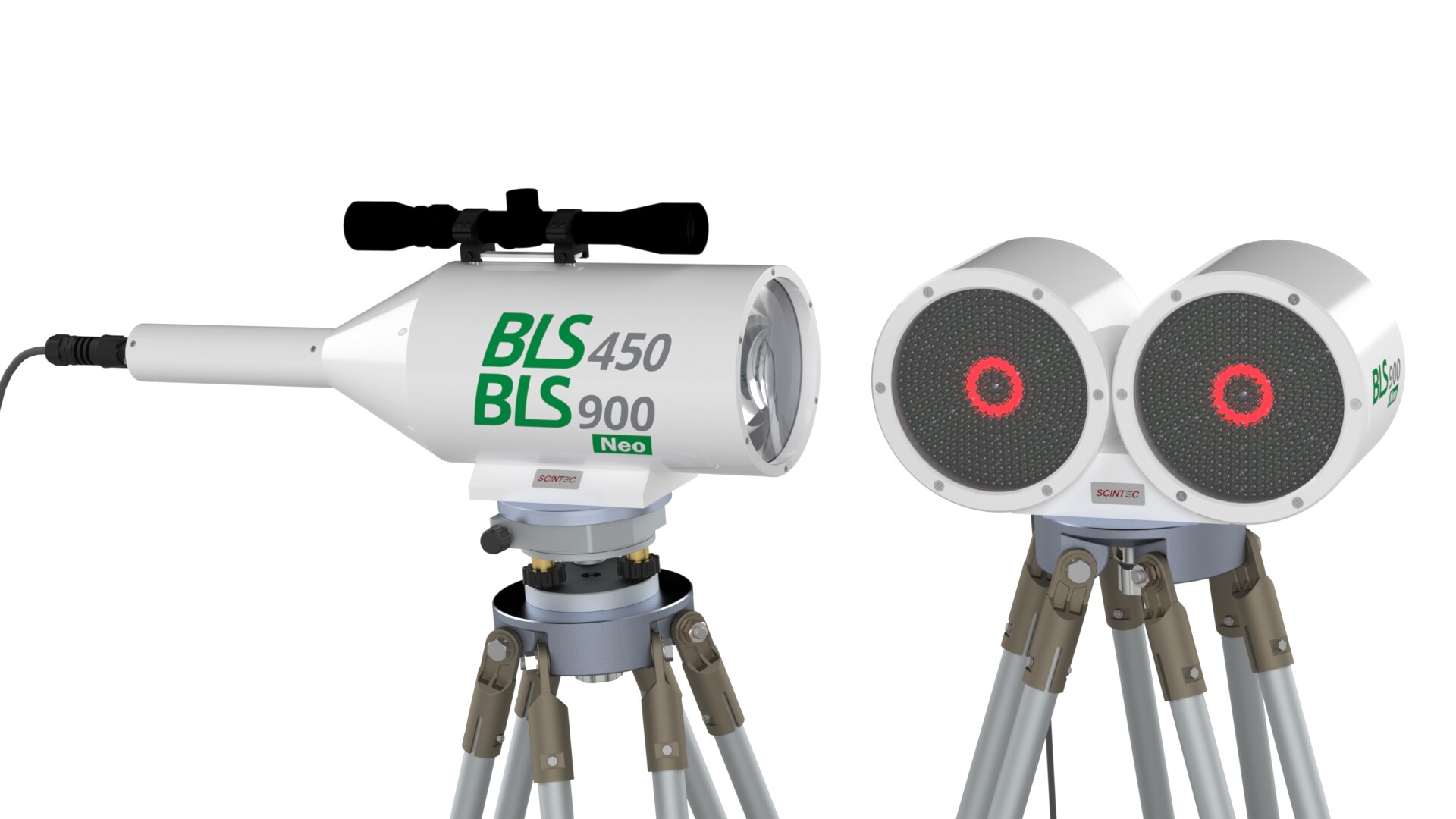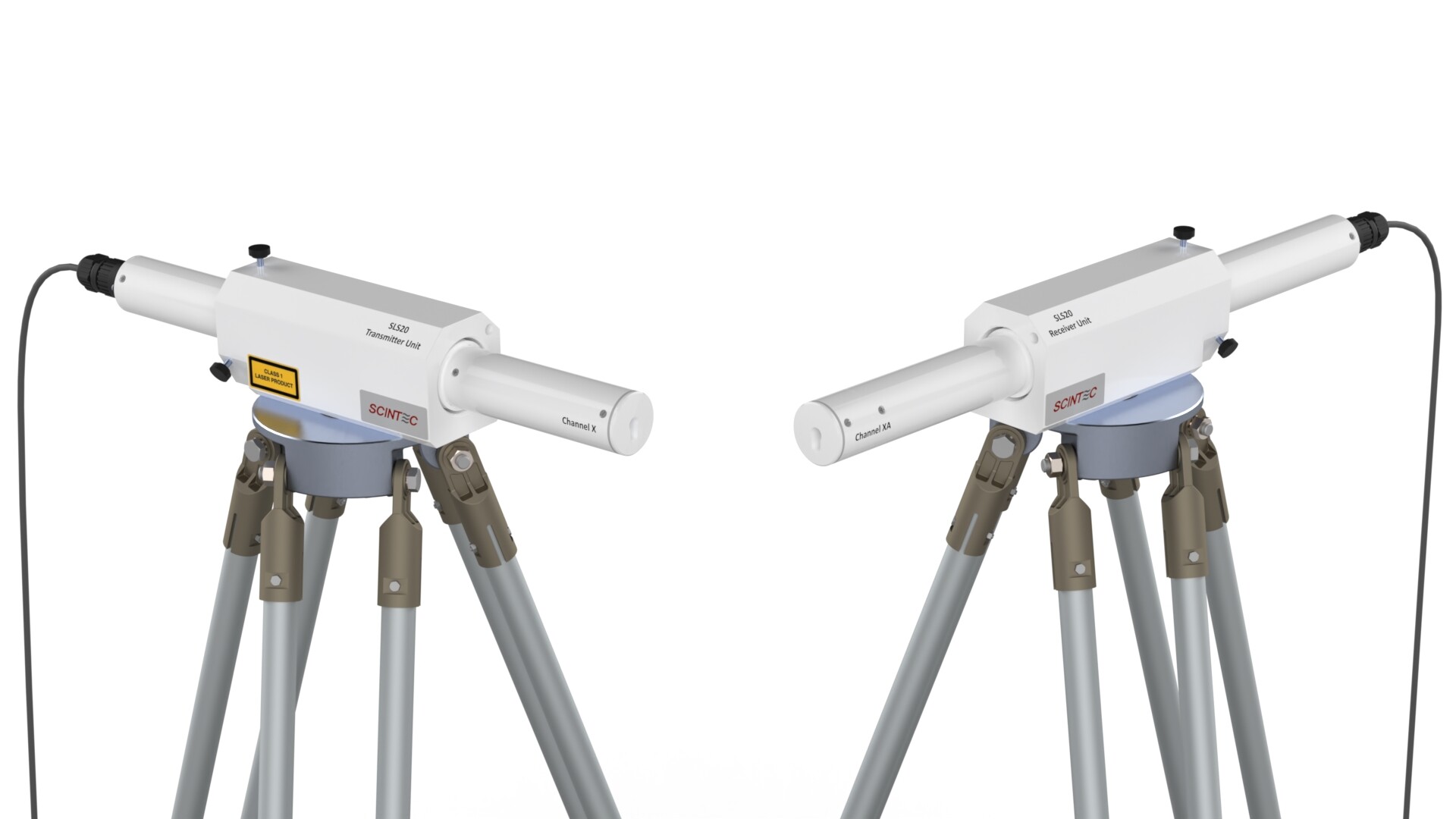Atmospheric seeing is affected in two ways. Molecules and particles in the air cause absorption and scattering, both linked to transmission and visibility. Turbulent variations of temperature and humidity relate to turbulent fluctuations of the refractive index of air and cause a variety of effects due to local variations of amplitude and phase in propagating waves. These effects include the well-known twinkling of stars. For the visible, infrared and ultraviolet wavelengths, turbulent refractive index fluctuations are often denoted as “optical turbulence”.
Through its effect on wave propagation, optical turbulence interferes with many industrial electro-optical systems in the areas of optical communication, laser guidance, laser scanning, imaging, and remote sensing. Examples of interference are amplitude fluctuations, phase fluctuations, beam wander, angle-of-arrival fluctuations, image blur, loss of coherence in and transverse to the propagation direction. In many cases, the result is a limitation or degradation of the system performance.
Scintec products are widely used for the measurement of optical turbulence. The structure function constant Cn2 and the inner scale l0 of refractive index fluctuations are the relevant atmospheric quantities to be determined. In fact, any performance testing of affected systems must be accompanied by measurements of the atmospheric turbulence conditions to allow a correct interpretation of the testing results.
Scintillometers usally are the devices of choice. BLS Series Scintillometers allow measurements over long propagations paths. SLS Series Scintillometers can measure Cn2 and inner scale l0 and derive vertical profiles of Cn2 and l0 based on Monin-Obukhov similarity theory.
The BLS900 and the BLS2000 as well as all SLS Series Scintillometers can also provide the crosswind speed which can be used to calculate the frequency content of the optical turbulence interferences.
Through its effect on atmospheric reflectivity for sound waves, FAS Series Sodars can measure the structure function constant of temperature CT2 remotely from the ground. From CT2, Cn2 for optical frequencies can be derived. In addition, the wind speed can be determined which is related to the propagation speed of the optical disturbances. Sodar measurements have been used to improve the implementation of adaptive optics when imaging remote objects or in astronomy.
Similar to sodars, the LAP Series Radar Wind Profilers can determine turbulent reflectivity. Since radars work with radio frequencies and the refractive index of radio frequencies is sensitive to humidity, the reflectivity is linked to tubulent humidity fluctuations here.*

MFAS is a versatile acoustic Wind Profiler which combines the both advantages of an excellent portability and a high detection range.

Dual-Disk Design
The Dual-Disk Design of the BLS900 Neo provides for instantaneous corrections of absorption fluctuations, saturation of scintillation and outer scale effects.

The Surface Layer Scintillometer for stable platforms or heavy tripods on solid ground.


